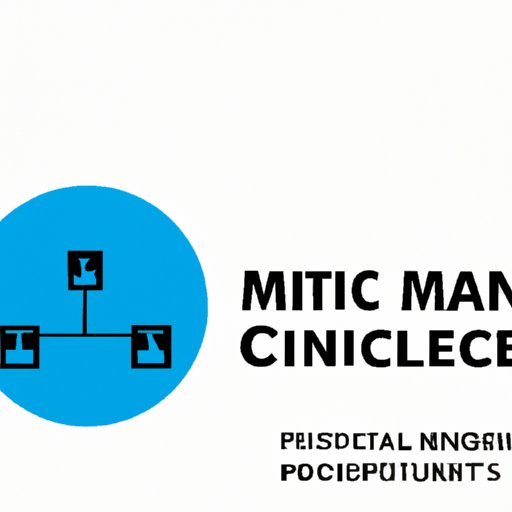
Integrated Marketing Communications: A Comprehensive Guide
As businesses and organizations strive to reach larger audiences, increase market share, and maintain a positive public image, the importance of Integrated Marketing Communications (IMC) cannot be overemphasized. IMC is a strategic approach that utilizes all the different marketing channels at a company’s disposal, including advertising, public relations, sales promotion, direct marketing, and others, to create a seamless and consistent message to the target audience. By effectively coordinating these channels and maintaining consistent messaging, organizations can build a strong brand identity and drive sales. In this article, we explore the various elements of IMC, its role in modern business, the advantages and potential pitfalls, and how companies can utilize it in their marketing efforts.
The Various Channels and Elements of IMC
IMC involves the coordination of different communication channels, with each channel playing a unique role in conveying the brand message, engaging with customers, and ultimately driving sales. These channels include advertising, public relations, sales promotion, personal selling, direct marketing, sponsorship, and packaging. Advertising is one of the most widely used channels in IMC, and its main goal is to inform consumers of a product or service. Public relations, on the other hand, is more focused on building a positive public image of a company, brand, or product.
Sales promotion typically refers to short-term activities aimed at boosting sales, such as discounts, coupons, contests, and giveaways. Direct marketing involves direct communication with potential customers through mail, email, or telemarketing, while personal selling involves face-to-face communication between a salesperson and a customer. Sponsorship, on the other hand, involves supporting events or organizations that are relevant to the brand, while packaging is a key element of branding that enhances product appeal and communicates key brand attributes visually.
Successful IMC campaigns require a well-coordinated and balanced mix of these channels. An excellent example of IMC at work is Nike’s “Just Do It” campaign, which utilized various channels such as advertising, sponsorship, and public relations to build a strong brand identity.
The Role of Technology in IMC
The fields of big data, data analytics, AI, and machine learning have transformed the way companies approach IMC. Businesses today are increasingly leveraging different applications of technology to reach out and connect with their target audiences. This includes the use of data analytics to identify trends and behaviors among potential customers and leverage this information to better engage with them. Machine learning, on the other hand, enables organizations to analyze vast amounts of data in real-time and make data-driven marketing decisions.
In addition, technology has transformed the field of advertising, with social media platforms such as Facebook, Twitter, and Instagram providing businesses with a cost-effective way to reach out to vast numbers of potential customers. Other technological advances such as augmented reality, virtual reality, and chatbots have also changed the way customers engage with brands.
Case Studies of Successful IMC Strategies
Several businesses and industries have embraced IMC with remarkable results. For example, Coca-Cola’s “Share a Coke” campaign was a major success, leveraging personalization and storytelling across different channels to create an exciting brand experience. Another well-regarded IMC campaign is Apple’s “Think Different” campaign, which was an early example of brand storytelling that focused on Apple’s innovative culture.
IMC campaigns require a deep understanding of target customers and what motivates them. By studying and analyzing customer behavior, companies can craft a storytelling strategy that resonates with their target audiences. This can result in increased brand awareness, customer engagement, and long-term loyalty.

Advantages and Potential Pitfalls of IMC
IMC offers several advantages for businesses looking to improve their marketing efforts. One of the most significant advantages is increased brand recognition due to consistent messaging across all channels. IMC allows businesses to communicate a clear, consistent, and meaningful brand message to its target audience across different channels. This creates a recognizable brand identity and helps to build a strong connection between the brand and its customers.
However, Imc is not without its potential pitfalls. One of the primary concerns is the risk of inconsistent messaging that can lead to confusion and even mistrust among customers. To avoid this, businesses need to have a well-coordinated and unified message across all channels and ensure that all departments work together towards a common goal. Additionally, businesses need to keep up with the ever-changing marketing technology, which can be resource-intensive.
Storytelling and the Art of Compelling Brand Narratives
Storytelling is an essential element of successful IMC campaigns. Brands can leverage storytelling to emotionally connect with their target audience, making them more likely to remember and identify with the brand. There is a wide range of multimedia platforms that businesses can use to develop compelling brand narratives, including videos, social media, podcasts, and blogs.
The key to successful storytelling is to craft a narrative that resonates with the target audience. Brands need to understand their customers’ behaviors, challenges, and aspirations to create a compelling storyline. Additionally, businesses need to ensure that their brand narrative is consistent across all channels and that they make effective use of the multimedia platforms available to them.
The Future of IMC
As the marketing technology landscape continues to evolve, it is becoming increasingly evident that IMC will become an essential tool for businesses looking to reach out to their customers effectively. Emerging trends such as virtual and augmented reality, chatbots, and artificial intelligence are likely to transform the field of IMC in the coming years, creating new opportunities and challenges for marketers.
However, the fundamentals of IMC, including storytelling, consistency, and clear messaging, will remain relevant, and businesses that can effectively integrate these elements into their marketing strategies will be best positioned to succeed in the future.
Conclusion
IMC is a strategic approach that allows businesses to coordinate and integrate all the different marketing channels at their disposal. By adopting an IMC approach, businesses can create a seamless and consistent message to their target audience, build a strong brand identity, and drive sales. However, given the potential pitfalls that come with adopting an IMC approach, businesses need to have a well-coordinated and unified message across all channels, align all departments towards a common goal, and keep up with changing marketing technology trends. By integrating effective storytelling, consistent messaging, and ensuring the use of the latest marketing technologies, businesses can succeed in the increasingly competitive marketing landscape of today and tomorrow.




